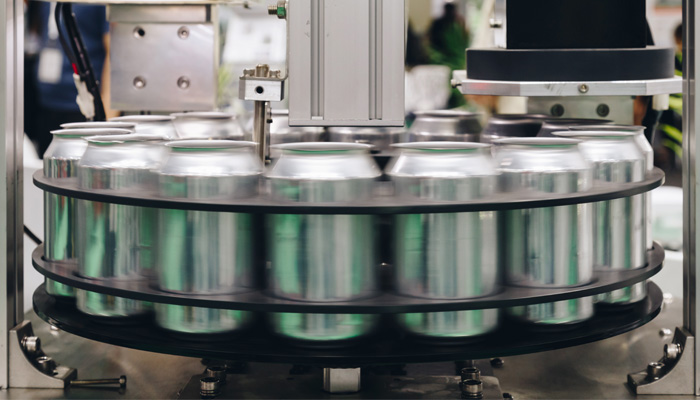
For more than a century, cans have quietly held their place as one of the most trusted packaging formats in the world. Durable, endlessly recyclable, and built for shelf stability, they’re the unsung heroes behind countless products, from hearty soups and savory sauces to pet food and ready-to-drink coffee.
But while cans themselves haven’t changed much, how we fill and seal them definitely has. Today’s consumer demands, labor challenges, and tighter margins are pushing manufacturers to rethink their approach — and automation is quickly becoming less of a “nice to have” and more of a must-have. Today, automation is essential.
1. Meeting Higher Consumer and Retailer Expectations
Today’s shoppers expect consistent quality, perfect fills, and safe products, every time. And retailers expect the same, but at scale.
That puts a lot of pressure on manufacturers to:
- Hit tight fill tolerances
- Keep seams and vacuum levels just right
- Prevent contamination
- Minimize defects and downtime
Advanced canning systems bring precision and repeatability to every step. Whether you’re filling a creamy soup or a chunky stew, modern systems can adjust fill levels on the fly, catch inconsistencies, and run real-time quality checks before small problems turn into big ones.
2. Dealing with the Labor Crunch
Let’s be honest: finding and keeping people to do repetitive, physically tough jobs is harder than ever. And when it comes to things like manual seaming, inspecting, or material handling, it’s slow and risky. Fatigue, injuries, and human error are real concerns.
That’s where automation can seriously change the game by handling tasks like:
- Depalletizing (such as ProMach product brand Sentry)
- Filling and seaming (for everything from high-acid to low-acid foods, which Zacmi specializes in for the food market)
- Retort loading/unloading (such as Allpax solutions)
- Labeling and coding (such as ProMach’s Decorative Labeling product brands and Labeling and Coding solutions)
- And end of line such as palletizing and more (see ProMach’s best in class robotics and end of line solutions)
Freeing up your team from the heavy, repetitive work means they can focus on higher-value tasks, like quality checks, line optimization, and scaling up production.
3. Keeping Up with Product and Format Innovation
New products and formats are hitting the shelves faster than ever. One week it’s protein-packed soups, the next it’s oat milk lattes in slim aluminum cans. Consumers are looking for variety.
Modern automation helps you keep pace with all that change. With quick changeovers, programmable recipes, and smart sensors, you can pivot to new SKUs without losing efficiency.
4. Making Food Safety and Compliance Easier
Food safety is everything. Whether you’re making pet food, organic soups, or ready-to-drink coffee, you need to hit strict standards like FSMA and HACCP.
Automation helps by:
- Running inline inspections that catch dents, seam issues, or fill problems
- Automating retort sterilization with precise time/temperature control
- Using CIP (Clean-in-Place) systems to meet sanitation standards while saving time and water
Plus, because automated systems collect performance data as they run, audits and traceability become way less stressful.
5. Speeding Up Canning Lines Without Sacrificing Quality
Speed matters. But speed without control? That’s a recipe for product waste and customer complaints.
Modern canning automation lets you:
- Boost line speeds without bottlenecks
- Reduce downtime with predictive maintenance
- Keep output consistent, even at higher volumes
The bottom line: you get more product out the door, and you keep quality where it needs to be.
A Quick Word on Integration
Here’s the real magic of modern automation isn’t just faster machines. It’s smarter ones.
When your depalletizer, filler, retort, labeler, and palletizer are all connected, you can track performance across the whole line, boost your OEE and cut down on confusion between stages.
ProMach makes this easier by offering integrated canning and packaging solutions across brands, built to work together seamlessly or plug into your existing lines.
So, Is It Time to Automate Your Canning Line?
Ask yourself:
- Are we struggling to keep up with demand or add new SKUs?
- Are labor shortages holding us back?
- Are food safety checks getting missed?
- Are changeovers and rework eating into our uptime?
If you’re nodding “yes” to any of those, it might be time to take the next step.
Let’s hear from you:
What part of your canning line could use an upgrade? Are you already running automated systems, or are you just starting to explore?
Drop your thoughts below — we’d love to hear what you’re seeing on your production floor.

